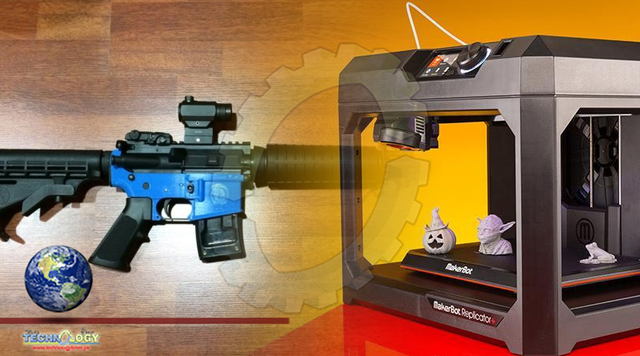There are mounting concerns over the proliferation of 3D-printed weapons amid growing arrests across Europe of people downloading and or trying to build their own guns.

‘Past Crimes’
That was the advice of Stephan Balliet, a German Neo-Nazi who has been sentenced to life in prison for killing two people after attempting to attack a synagogue in the city of Halle on October 9, 2019.
Balliet, 27, was referring to 3D-printed firearms. In the same post, on the now-defunct far-right messaging board, Meguca, Balliet wrote, just minutes before carrying out his attack: “Of course, there are dozens of other designs out there, so what’s special with mine? Simple, I prefer live testing.”
He then provided a link to a livestream on the gaming platform, Twitch, which broadcast his gun attack.
In his manifesto, which was also uploaded onto Meguca, apart from his objective of trying to “kill as many anti-Whites as possible, jews preferred”, Balliet also stated that he wanted to “prove the viability of improvised weapons”.
Among the cache of firearms Balliet had in Halle was a sub-machine gun that had 3D-printed plastic components, such as the magazine and grip.
Balliet’s attack is seen as a breakthrough moment among cases of far-right “extremism”, described by several experts as being the first perpetrator that had made and used a weapon from 3D-printed elements.
The world’s first ever gun to be made from a 3D printer was built in 2013 by Cody Wilson, a 25-year-old gun rights activist in the United States.
Ballistics and firearms expert Phillip Boyce, from the British-based firm Forensic Equity, said 3D printed guns have evolved since then, despite the “standard and quality” remaining “about the same”, with various designs now available.
‘3D-printed guns becoming ‘more accessible’
Since 2019, there has been an increase in the number of arrests and convictions in a number of European countries and elsewhere of people downloading and or trying to build their own 3D-printed guns. And so far, most seem to have far-right links, experts say.
In April this year, Spanish police raided a workshop that was producing 3D-printed weapons in Santa Cruz de Tenerife, in the Canary Islands. They recovered two 3D printers, a replica assault rifle and several gun barrels. Officers said they had also found manuals on urban guerrilla warfare and white supremacist literature. The owner of the workshop was arrested and charged with illegal possession of weapons.
The next month, two men and a woman were arrested in the British town of Keighley, as part of an investigation into “right-wing terrorism”, police said. All three were charged with possessing components of a 3D-printed firearm. One of the suspects faces an additional charge of disseminating an image of the Oklahoma City bomber, Timothy McVeigh.
And in June, a 15-year-old British girl from Derbyshire was charged with six terror offences, including the possession of a manual on how to make a firearm from a 3D printer.
“The technology is becoming more accessible,” said Rajan Basra, senior research fellow at the International Centre for the Study of Radicalisation at King’s College London, explaining the rising interest in 3D-printed guns.
In addition, Basra said, Baillet’s attack in Halle “helped to introduce that idea that you could do something on your own”, including by accessing internet forums where blueprints can be found.
‘Concern for the future’
But in a world where almost anything can be bought, why would criminals go to the trouble of making a gun instead of just paying for one?
Basra said it is all about access.
“To buy a gun, at least in Europe, you need access to the illicit firearms market – and not everyone has those connections that give you that access. So then you have to come up with alternative means.”
The way around this, Boyce said, was to “either convert a blank firearm or 3D-print a gun. And in terms of money, it’s going to cost you pennies, if not a few pounds, to produce a good working 3D printed gun.”
“But if you want, say a pistol or revolver on the black market that’s going to cost you somewhere in the region of £5,000 [$6,950] for the real thing.”
Basra warned the increasing use of plastic guns, which have no serial numbers, could be a glimpse into the future of attacks in Europe.
“This is the real worry,” he said. “The good thing is, is that police forces across Europe appear to be switched onto this problem,” he added, pointing to the arrests in Spain and the UK.
“But potentially, it is one of the waves of the future.”
Originally published by: AL JAZEERA